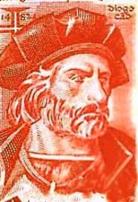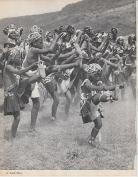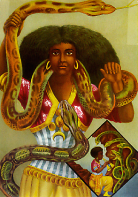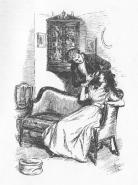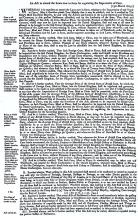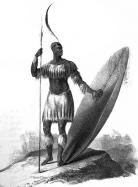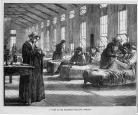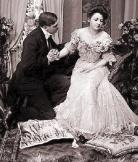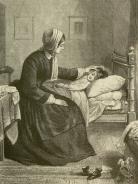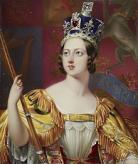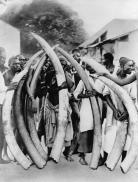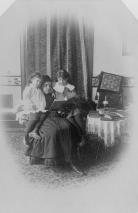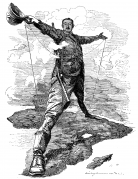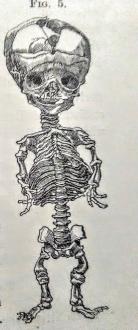Timeline: Thiel College ENG 312 SP23
Created by Sheila Gross on Thu, 01/19/2023 - 13:11
Part of Group:
A Timeline depicting events from the novels we're reading in class: Charles Dickens's A Christmas Carol, Jane Austen's Sense and Sensibility, Charlotte Bronte's Jane Eyre, Joseph Conrad's Hear of Darkness, Thomas Mofolo's Chaka, An Historical Romance, and Mary Shelley's Frankenstein (listed in reading order).
Timeline
Chronological table
| Date | Event | Created by | Associated Places | |
|---|---|---|---|---|
| circa. 1200 |
St. Albertus MagnusAlbertus Magnus was a German theologian, scientist, and philosopher. Most notably, he was a bishop who taught St. Thomas Aquinas. Because of his contributions to the sciences and the church, he was canonized as a saint in 1931 and declared as the patron saint of those who study the natural sciences (Britannica). St. Thomas Aquinas, after being taught by Magnus wrote one of his most famous works, Summa Theologiae, in which he utilized the philosophies of Aristotle to explain the relationship between God and Man. (Summa theologiae, Britannica) By including Albertus Magnus in Frankenstein, Shelley contributes to the historicity of the work, as Magnus was likely one of the figures studied by scientists in Europe prior to Victor’s introduction to the sciences. Works Cited Shelley, Mary. Frankenstein; Or, the Modern Prometheus. 1818. "St. Albertus Magnus." Britannica, www.britannica.com/biography/Saint-Albertus-Magnus. Accessed 1 May 2023. "Summa Theologiae." Britannica, www.britannica.com/topic/Summa-theologiae. Accessed 1 May 2023. |
Abigail Smagala | ||
| circa. 1480 |
Diogo CaoDiogo Cao and Marlow In the Heart of Darkness, Marlow is the white European explorer to explore the Congo River. He is sent by the company to explore the blank places on the map. Many parallels can be drawn between Marlow and Diogo Cão, the first European to discover the mouth of the Congo River in August of 1482. “There he set up a stone pillar to mark Portuguese overlordship of the area. Sailing a short way upstream, he found that the inhabitants along the bank appeared willing to trade” (Diogo Cão) this helps the reader understand the novel better because the item at this period of time to be trading was ivory, which is why Marlow also goes to the Congo River. This also helps to elaborate on Mr. Kurtz obsession with ivory as it was a status symbol for millennia. This is due to it coming from elephants, a highly respected animal in Africa at the time. Diego was also a most notable navigator during the Age of Discovery. The Age of Discovery “was part of the early modern period during which seafaring Europeans explored, colonized, and conquered regions across the globe”(Age of Discovery). Knowing this, the reader can infer that Marlow is a part of the Age of Discovery. This plays along with the overall feeling from the narrator and what they are trying to portray to the reader. Marlow and Diogo were a part of something bigger, finding new land in an unknown world. This overall presents a dystopia vision of the brutality of colonialism in the Belgian Congo.
“Age of Discovery.” Wikipedia, Wikimedia Foundation, 11 Apr. 2023, https://en.wikipedia.org/wiki/Age_of_Discovery. Conrad, Joseph. Heart of Darkness “Diogo Cão.” Encyclopædia Britannica, Encyclopædia Britannica, Inc., https://www.britannica.com/biography/Diogo-Cao. “Diogo Cão.” Wikipedia, Wikimedia Foundation, 31 Mar. 2023, https://en.wikipedia.org/wiki/Diogo_C%C3%A3o.
|
Keara Henry | ||
| 1560 |
Locket RingsLocket rings play a crucial part in unraveling the plot of Sense and Sensibility. Between Edward’s locket ring with a piece of Lucy’s hair and Willoughby cutting Marianne’s hair for a piece of his own, this gives the reader an insight into the importance of mementos to lovers. The rings came into popular fashion when Queen Elizabeth the I had one crafted with a miniature portrait of her as a young woman and the other portrait was speculated to be of her mother, Anne Boleyn. As a tradition in England, once the Queen wore it everyone else followed. Rings often contained a miniature portrait, silhouette, or piece of hair of a loved one. The rings were often used as mourning rings, a remembrance of the dead, and did not gain traction as a romantic gesture until the Regency era. During this time, having a lock of hair concealed in a ring often symbolized an engagement, secret or outed, or a deep emotional connection between two people. Austin uses the lockets on two occasions in the book to reveal a significant plot point. The first incidence is when Willoughby cuts a lock of Marianne’s hair, further solidifying the family’s speculation that the two are secretly engaged. The second scene that highlights the locket ring is when the sisters ask Edward Farris whose hair is in his locket ring, to which he states it is his sister’s, Fanny’s, hair but later it is revealed to Elinor that the true owner of that hair belongs to Lucy Steele. Locket rings are an important symbol in Austin’s work as well as in regency society. Kane, Kathryn. “For Love or Death: Locket Rings.” The Regency Redingote, 12 Feb. 2017, https://regencyredingote.wordpress.com/2017/02/10/for-love-or-death-lock.... |
Cynthia Honeycutt | ||
| circa. 1670 |
The Zulu PeopleThe group of warriors depicted in Thomas Mofolo’s Chaka, An Historical Romance originate in about 1670 (“Zulu”). Known as the “Zulu,” these people are a large group consisting of an estimated 10 million members in Southern Africa (“Zulu”). Along with this, the demographic refers to themselves as “the people of the heavens,” and they experienced a large amount of success underneath the leadership of Shaka following the death of his father, Senzangakhona, in the 19th century (”Zulu”). At the start of his reign in 1816, there were only approximately 1,500 members (“Zulu”). By the end of Shaka’s ruling in 1828, an army of 50,000 men emerged, and were successful due to the military tactics of their leader (“Zulu”). Shaka was murdered by his brothers in 1828, which ended his rule (“Zulu”). Outside of this, the Zulu people have a rich culture consisting of various customs; this includes music, dance, and the importance of snakes in terms of communication with their ancestors (“Zulu”). What one may be surprised about is their eating habits; they rarely eat meat (“Zulu”). Their meals consist mostly of vegetables and grain; oxen are only killed to celebrate a special occasion for the people (“Zulu”). By understanding the Zulu people in this regard, my understanding of Chaka, An Historical Romance is deepened. It is because I now know the historical aspects related to the story. Before, I had to treat the author as the best authority on the subject, but now I have substantiation for some of the scenes presented in the work, itself. In addition to this, I think it is good for the sake of differentiating reality and spectacle present within Mofolo’s work. Works Cited Mofolo, Thomas. Chaka. Oxford University Press, 1931. “Zulu.” South African History Online, https://www.sahistory.org.za/article/zulu#:~:text=The%20word%20Zulu%20me.... “Zulu.” Zulu - African Culture, https://www.krugerpark.co.za/africa_zulu.html#:~:text=Zulu%20beliefs%20a.... |
Legion Lake | ||
| 1700 |
Newfoundlands and GytrashIn Jane Eyre, Mr. Rochester owns a Newfoundland named Piolet. Newfoundland dogs originated in Canada as aids for hunters and fishermen. There are a multitude of stories from the Newfoundland and Labrador placing their origin roughly around the 11th century. There are accounts of Viking Leif Erikson being accompanied by a large black dog that resembled a Newfoundland. The dog breed became popular in Europe around the 17th century as working dogs in the harbors and on ships. Newf’s are most commonly associated with having black fur, but they can have white and black fur. When Jane first sees Piolet, she refers to him as a Gytrash. A gytrash is a mythological creature from Welsh mythology and is thought to be an omen of doom. Gytrash are notorious shapeshifters that can take the form of a multitude of creature such as horses, mules, cranes, cows, and most often canines. The description of these creatures is a black, large, and furry which quite similar to the characteristics of Newfoundland. During the 1800s, Newfoundlands were a very common sight in England as both seamen and nobles adored the dog breed. Not only are they good working dogs as they can pull nets, carts, and drowning people, but nobles found the legends of the breed irresistible. The breed has a heroic history of saving people and going on adventures, notably Lewis and Clark took a Newf with them on their expedition through the American wilderness. Seeing as the breed has a noble, distinguished, and mysterious air to them, it is not a surprise they made an appearance in notable Victorian literature. |
Cynthia Honeycutt | ||
| circa. 1701 to circa. 1900 |
Interracial Marriage in the Victorian EraThe subject of marriage is represented quite extensively in the Victorian Era of literature; this comes to fruition through means of the marriage plot. When thinking of this communion, however, one may be curious as to how accepted interracial marriage was during this time; specifically focusing on England. While not discussed as much during the 18th century, much of the sentiments shared by the population can be found in the 19th century. Furthermore, one may be surprised to discover that the concept of mixed-race relationships was not as much of a taboo as one may have once thought in comparison to contemporary times despite many citizens being described as predominantly white during this time (Caballero). Mainly, interracial marriage occurred in portside communities, and even aristocracy participated in the act (Caballero). One notable member of this demographic that had an interracial marriage is Lady Anne Coventry, a daughter of the 9th Earl of Coventry (Caballero). While there were certainly those who looked down upon the practice, usually; the act was a part of everyday life for groups who lived closely to each other (Caballero). In terms of Charlotte Bronte’s Jane Eyre: An Autobiography, the subject of interracial marriage finds a presence with the topic of Mr. Rochester. As revealed, Rochester married Bertha, a Creole woman. Being that she is Creole, she is of mixed race, herself, and I was curious as to how accepted this practice would have been for audiences reading the novel. Works Cited Caballero, Chamion. “Interraciality in Early Twentieth Century Britain: Challenging Traditional Conceptualisations through Accounts of 'Ordinariness'.” MDPI, Multidisciplinary Digital Publishing Institute, 17 Apr. 2019, https://www.mdpi.com/2313-5778/3/2/21. |
Legion Lake | ||
| circa. 1780 |
Snakes in South African CultureIn western culture, snakes often have negative connotations, most famously serving as a symbol of evil, stemming from Christianity’s use of the animal as a form of the devil. Many times, they are associated with both good and evil, as well as fertility and life (Serpent Symbolism). As mentioned in Mofolo’s novel, snakes are revered in South African cultures, so much so that the killing of a snake brings shame because they are believed to be messengers sent by their ancestors (Mofolo 2). There are numerous folk tales and superstitions about animals, and there are many beliefs about snakes, one of them being that the appearance of a snake at the time of a traditional ceremony is a sign of content ancestors. In Zulu tradition, eating raw snake liver acts as a protective charm. Snakes are also considered immortal, potentially because of their ability to shed their skin (Makhubo). Mofolo also highlights that, because of the importance of the snakes in Kafirland, they are a prominent part of medicine in the area. Snakes are also important to Zulu warriors, so it provides context to why the symbol would be mentioned so early and so heavily in Chaka’s story. He encounters a sea snake early in the story, which is frightening because, while snakes in his culture could represent pleased ancestors, they can also be a sign that they are displeased, and one must beg for mercy from the spirits that had been angered (Mofolo 3).
Works Cited Makhubo, Buyisile. "Myths and Superstitions about Reptiles and Amphibians." National Museum Publications, 30 Nov. 2017, nationalmuseumpublications.co.za/myths-and-superstitions-about-reptiles-and-amphibians/. Accessed 13 Apr. 2023. Mofolo, Thomas. Chaka An Historical Romance. Translated by F. H. Dutton, 1931. "Snake Symbolism." Wikipedia, en.wikipedia.org/wiki/Serpent_symbolism#. Accessed 13 Apr. 2023. |
Abigail Smagala | ||
| 1787 |
SteamboatsThe Steamboat was one of the most important inventions of the 16th century. Created by Thomas Newcomen and later improved by James Watt, steamboats engines revolutionized river travel. In Joseph Conrad’s Heart of Darkness, a majority of the story takes place on a steamboat traveling up the Congo River. Steamboats became very popular in America as John Fitch demonstrated the first working model steamboat on the Delaware River in 1787. After Fitch, Robert Fulton and Robert Livingston successfully designed a steamboat and made its first voyage from New York City to Albany, New York in 1807. Around this time, steamboats went an impressive five miles, eight kilometers, per hour and made frequent round trips for work and pleasure. Once the design and engine were perfected, 19th century major rivers were packed with steamboats as it was a quicker way to move people and goods. Even though they were more efficient, these boats were also quite dangerous as boilers could build up pressure and explode, debris, rocks, and other objects could cause them to sink, and overall, the boats had short life spans. Despite the fall backs, these boats were also cheap to make and maintain, which meant they where wonderful for exploration expeditions (the Congo River) and leisure travel (the Nile River). https://education.nationalgeographic.org/resource/steamboat/ |
Cynthia Honeycutt | ||
| circa. 1798 to circa. 1832 |
British Romanticism MovementThe British Romanticism movement was a literary movement that started in the late 18th century and is estimated to have ended in the 1830's. This period was defined by an increased interest in the individual in literature, the awe of nature, Gothic writing style, and the celebration of creativity. Key authors in this period are William Wordsworth, Samuel Taylor Coleridge, Lord Byron, William Blake, Percy Bysshe Shelley and Mary Shelley (Poetry Foundation). Many scholars debate that Lyrical Ballads by William Wordsworth and Samuel Taylor Coleridge was the start of the Romantic period. Though William Blake had published Songs of Experience prior to Lyrical Ballads, the latter established the characteristics of Romanticism whilst straying from the sophistocated and exquisite diction of the Neo-Classicism movement (Allegretti). The Second Generation Romantics established a different tone for the period, such as Lord Byron's satirical and seductive poetry, establishing the Byronic Hero, a new archetype in literature that deviated from the typical hero role (Poetry Foundation). Mary Shelley established the Gothic novel during this era with her publishing of Frankenstein, or The Modern Prometheus in 1818. Her husband, Percy Bysshe Shelley focused on poetry that touched on death, nature, and emotion, all defining traits of the movement itself (Allegretti).
Allegretti, Catherine. "The Romantic Period." Eastern Conneticut State University, https://www.easternct.edu/speichera/understanding-literary-history-all/t... "British Romanticism." Poetry Foundation, https://www.poetryfoundation.org/collections/152982/an-introduction-to-b... Wordsworth, William and Samuel Taylor Coleridge. Lyrical Ballads. Project Gutenburg, 10 October 2003. |
Dylan Evans | ||
| 1803 to 1815 |
Napoleonic WarsThe feud between the French and the Great Britain over European supremacy began long before the Napoleonic Wars officially began. The Napoleonic Wars took place amid the years of 1803 and 1815 between the French—under Napoleon—and English nations. The seven Napoleonic wars spawned from the political problems from the French Revolutionary wars from 1789-1802 (“Napoleonic Wars”). This war left many families in poverty and unemployed due to the high taxes, food prices, and wartime trade restrictions. Monetary struggles left many men to be forced to enter war in order to save their families financial conditions. It finally came to an end with the Second Treaty of Paris on November 20th, 1815. After Napoleon’s loss at the Battle of Waterloo (“The Napoleonic Wars”). From 1792 to the conclusion of the war, England was involved in the war. Being born in 1775 and raise during the war can have its effects on people, but Jane Austen kept her thoughts on war to herself. Although Austen rarely included politics or war in her novels, there are underlying aspects that can be tied back to these cultural impacts. Austen lived almost the entirety of her life in the shadow of the Napoleon’s oppression, and to not directly mention this fact in a novel can be understood—and criticized—by many. She was still connected to the war; two of her brothers were serving in the Royal Navy, and one in the militia. This can be tied into many of her novels, such as in Sense and Sensibility when the Dashwood sisters must leave their brother, Mr. John Dashwood (Everett). She also mentions in other novels war ships that may allude to that of her brother’s ships. Many researchers also found that when writing about a man in uniform, Austen characterized them as “handsome officers, but they appear less as fighting men than as gentlemen in uniform whose principal, maneuvers of French garrisons” (Nattress). Austen may have never directly stated the impact the war had on her and her family, or those families in her fictional novels, but many connections can be made between the two.
Works Cited Jason, R. Everett. “Jane Austen & the Wars.” http://www.theloiterer.org/essays/warsintro.html. “Napoleonic Wars.” Wikipedia, https://en.wikipedia.org/wiki/Napoleonic_Wars. Nattress, Laurel Ann. “Jane Austen and The Battle of Waterloo.” Austenprose, 18 June 2008, https://austenprose.com/2008/06/18/jane-austen-and-the-battle-of-waterloo/. “The Napoleonic Wars.” Britannica, https://www.britannica.com/place/United-Kingdom/Gladstone-and-Disraeli. Worsley, Lucy. “The Napoleonic Wars’ Impact on Jane Austen.” The History Reader, 31 July 2017. https://www.thehistoryreader.com/military-history/napoleonic-wars/. |
Tess Cadman | ||
| circa. 1811 to circa. 1820 |
Coverture Law and Courtship Etiquette in Regency EraThe idea of coverture is vital to the plot of Sense and Sensibility. Coverture is a practice that began in the Middle Ages under common law but lasted through the Regency Era (The Law of Coverture). Coverture maintained that a woman was legally subordinate to her husband. He managed her money, gained control of her property, and received almost exclusive responsibility of her (Coverture). Dowries were also a part of coverture; a woman’s family paid for her to be married, and this money, again, went exclusively to her husband. Until a woman was married, her affairs were handled by the man of the house, usually her father. Along with such laws regarding marriage, young men and women were also expected to conform to certain etiquette and societal conventions during courtship. Courtship was the stage prior to engagement that required couples to obey strict rules about behavior. Such rules included not being allowed to call each other by their Christian names, pay each other compliments, or ride in a carriage without a chaperone. Couples were also forbidden from having private correspondence or any sort of intimate contact (Rules of a Regency Courtship). Many of these courtship rules were broken by Marianne and Willoughby, which led those around them to assume an engagement. Often, during this era, courtship and eventual marriage was more of a business transaction than anything else, usually because of the idea of coverture. Edward Ferrars’s engagement to Lucy Steele was not acceptable to his mother because she was poor (Austen). He was expected to marry someone with money so that he could inherit it. Likewise, it is easy to conclude that Willoughby marries Miss Grey because she is rich; Austen writes, “‘But the family are all rich together. Fifty thousand pounds’” (Austen). The customs and expectations of the Regency Era heavily impacted how and why relationships formed, and it is evident to see how these ideas affect the Dashwood sisters. There was no official end to coverture, but the passing of other legislature in the mid-19th century slowly moved the practice out of fashion (The Law of Coverture). Works Cited Austen, Jane. Sense and Sensibility. 1811. "Coverture." Britannica, Encyclopedia Britannica, 8 Oct. 2007, www.britannica.com/topic/coverture. Accessed 7 Feb. 2023. "The Law of Coverture: Why Call a Woman by Her Husband's Name?" Amazing Women in History, amazingwomeninhistory.com/law-of-coverture-why-call-a-woman-by-her-husbands-name/. Accessed 7 Feb. 2023. "Rules of a Regency Courtship." Random Bits of Fascination, 11 Feb. 2021, randombitsoffascination.com/2021/02/11/rules-of-a-regency-courtship/. Accessed 7 Feb. 2023. |
Abigail Smagala | ||
| circa. 1812 |
Elgin Marbles Brought to EnglandIn 1812, the Elgin Marbles- Ancient Greek sculptures of marble from Athens- were transported from Greece to England. These statues were permitted to leave Greece because of an agreement between England and the Ottoman Empire, which had recently been growing in power. The event had many questioning the ethics of collecting art from other countries without explicit permission of its original ownership. Though this is modernly seen as a negative event, it marked a shift in cultural interest throughout England, a characteristic present in the Regency and Victorian era. This deepend interest in the arts caused the neoclassicism movement in England (The British Museum.) With a new found appreciation of classic art, a new genre, the novel, was also growing in popularity. The neoclassicist movement, though restrictive, allowed the novel genre to grow and even thrive. Examples of this genre include Sense and Sensability by Jane Austen and Great Expectations by Charles Dickens (Elgin Marbles.)
The room containing the Elgin Marbles in the British Museum.
"Elgin Marbles." Encyclopedia Britannica, britannica.com/topic/Elgin-Marbles. "The Parthenon Sculptures." The British Museum, https://www.britishmuseum.org/about-us/british-museum-story/contested-ob...
|
Dylan Evans | ||
| 29 Nov 1814 |
Invention of Steam Powered Printing PressSharing scary stories around a fire is not something teenagers thought of one day to spook each other. Verbally telling tales of ghosts, ghouls, spirits, and monsters has been around for many decades. Before the printed book, these stories were mainly shared orally or through illustrations on natural materials such as clay or rocks. It has been proven that tales would be passed down through generations and generations. Families would participate in storytelling to pass time; this was common before the development of electricity (Yuko). Then came the invention of the printing press in 1453; printing text on paper and disseminating information became a worldly practice. My years later during the industrial revolution, the steam powered printing press was invented in London, England on November 29, 1814, by Friedrich Koenig and Andreas Bauer. By reason of their invention books, novels, newspapers, etc., could be printed and produced at much faster rate than ever before (“Printing Press”). The invention permitted authors to share their work more widely and to a broader audience. Supernatural and ghost stories became a very popular genre in Victorian England. Much like Charles Dicken’s A Christmas Carol, these were produced for an audience of the middle-class and released just in time for Christmas, where families would gather and share stories. Printed versions of these ghost stories “were available to read everywhere from cheap publications to expensive Christmas annuals that middle-class ladies would show off on their coffee tables” (Cooke). One of the main reasons Dicken’s novel became so popular was due to the steamed printing press in 1814. Dickens is admired as starting the tradition of sharing ghost stories around Christmas time, as well as generating many Christmas traditions due to the availability and preservation of A Christmas Carol.
Cooke, Simon. “Victorian Ghost Stories.” The Victorian Web, https://victorianweb.org/genre/ghoststories/cooke.html. “Printing Press.” Wikipedia, https://en.wikipedia.org/wiki/Printing_press. Yuko, Elizabeth. “How Ghost Stories Became a Christmas Tradition in Victorian England.” History, 15 Dec. 2021, https://www.history.com/news/christmas-tradition-ghost-stories. |
Tess Cadman | ||
| 1815 |
Eruption of Mount TamboraMount Tambora is a volcano on the island of Sumbawa in present day Indonesia, then part of the Dutch East Indies. Its eruption in 1815 was the most powerful volcanic eruptions recorded in human history. “It had the effects of causing 10,000-11,000 deaths from direct volcanic effects and 49,000-90,000 deaths from post-eruption famine and epidemic diseases. This eruption was said to have reduced global temperatures in the following year which led to famine in numerous regions” (1815 Eruption of Mount Tambora). This was called the ‘year without a summer’. During this period, the days were cold and wet across Europe and North America. This summer of 1816 also erupted the start of gothic tales in literature. This is when gothic literature emerges in Europe in the 18th century and its entails placing strong emphasis on intense emotion, pairing terror with pleasure, and death with romance. This is also when Polidori’s The Vampyre was also written which has dark themes such as seduction and murder. “Mary Shelley was said to witness this eruption’s effects firsthand as she traveled across Europe with her husband” (Strickland, Ashley). During her trip, she was confined indoors by the bad weather. This is when she was said to write her novel Frankenstein. “As she wrote, she inflected the foreboding landscapes and human misery into her emerging horror novel” (Alan Marshall Lecturer in Environmental Social Sciences). The volcano was inactive for 5,000 years before it exploded. The eruption of Mount Tambora can be paralleled to the awakening of the monster, both an eruption of life. While the gothic era may not have given way because of the eruption of Mount Tambora
“1815 Eruption of Mount Tambora.” Wikipedia, Wikimedia Foundation, 14 Apr. 2023, https://en.wikipedia.org/wiki/1815_eruption_of_Mount_Tambora. Alan Marshall Lecturer in Environmental Social Sciences. “Did a Volcanic Eruption in Indonesia Really Lead to the Creation of Frankenstein?” The Conversation, 3 Apr. 2023, https://theconversation.com/did-a-volcanic-eruption-in-indonesia-really-... Strickland, Ashley. “Why a Volcanic Eruption Caused a 'Year without a Summer' in 1816.” CNN, Cable News Network, 17 Sept. 2019, https://www.cnn.com/2019/09/17/world/tambora-eruption-year-without-summe... |
Keara Henry | ||
| 1815 |
The Corn LawsThe Corn Laws were tariffs that governed the importation and exportation of grain. Some sources say that these laws were introduced as early as the twelfth century; however, they became politically important in the late eighteenth century through the early nineteenth century. The reason for their increase in popularity was because of the grain shortage caused by both a growing population and blockades imposed by the Napoleonic Wars ("Corn Law"). Furthermore, these laws caused stress amongst the middle class because they could not grow their own food making them pay high prices for these goods (The Corn Laws). The Anti-Corn Law League, formerly known as the Anti-Corn Law Association, was reformed in 1839 to repeal these laws, so they could sell more goods nationally and internationally (The Corn Laws). This group was mainly comprised of middle-class manufacturers, merchants, bankers, and traders. The Anti-Corn Law League lead a nation-wide campaign in 1846 in which they successfully convinced Parliament and the Prime Minister, Sir Robert Peel, to repeal the legislation. In "A Christmas Carol", written by Charles Dickens, the setting is the city of London. There were characters like the Cratchit family who did not have a significant amount of wealth like Scrooge did. Because of their financial struggles, the holiday time made it difficult to buy certain goods for Christmas dinner. The Corn Laws were not repealed until 1846, making them relevant to the financial hardships that some families endured throughout the Dickens novel. Not only can Scrooge's gesture of buying goods for the family dinner be seen as his character development, but also as a charitable act given a difficult time. Works Cited "Corn Law." Britannica Academic, Encyclopædia Britannica, 12 May. 2010. academic.eb.com/levels/collegiate/article/Corn-Law/26322. Accessed 30 Jan. 2023. “Corn Laws.” Wikipedia, Wikimedia Foundation, 17 Jan. 2023, https://en.wikipedia.org/wiki/Corn_Laws#:~:text=The%20Corn%20Laws%20were.... The Corn Laws, https://www.victorianweb.org/history/cornlaws1.html. |
Kaitlyn Schmidt | ||
| 1816 to 1828 |
Shaka the Zulu KingBorn to the leader of the Zulu Kingdom out of wedlock, Shaka kaSenzangakhona, or Chaka in the historical romance retelling, was never meant to be king. His father, Senzangakhona kaJama, and Mother Nandi Bhebhe gave birth to Shaka before they were married—dooming him from ever becoming king. After the death of his father, Shaka’s half-brother took over the tribe. Shaka was determined to take over the Zulu tribe and become the leader. With help of his other half-brother, Dingiswayo, Shaka proved his worth to his people by battling and killing his half-brother Sigujana for the leadership position (“Shaka”). In Mofolo’s version, he depicts Chaka as a strong leader, “a fine little fellow with fat cheeks who never cried even when he fell down. Even when he was beaten he did not often cry: he might cry for a moment and then be quiet” (Mofolo 8). The descriptive character traits of Chaka illustrate the famous real-life Zulu leader, Shaka. Readers see this character development parallel along with many other similarities between this historic event and Chaka: A Historical Romance by Mofolo. All the events that happen in Chaka, line up with the historic events of Shaka almost perfectly. Henry Newbolt writes in his introduction of the book, “but there can be no doubt that in the author’s own view, it is a serious contribution to history…his intention is further shown by the fact that he has made more than one journey into Natal to ascertain dates and other details for his narrative” (xi). Along with the historical accuracies, the fact that Mofolo traveled to the location where the story takes place—KwaZulu Natal—and is from a country not too far away from the setting, makes him a trustworthy narrator with an abundance of knowledge of the actual Shaka (“Shaka”). Works Cited Mofolo, Thomas. Chaka. Oxford University Press, 1931. “Shaka.” Wikipedia, https://en.wikipedia.org/wiki/Shaka. |
Tess Cadman | ||
| 1817 |
Ndwandwe-Zulu WarShaka was the king of the Zulu Kingdom from 1816 to 1828. As one of the most influential monarchs of the ZULU, “he ordered wide-reaching reforms that reorganized the military onto a formidable force” (Shaka). Chaka in this novel can easily represent Shaka. They both greed for more power and more fame, stopping at nothing to get it. They kill their wife and their mother to make sure they are the most powerful warrior. In the novel, it tells of Chaka’s great wars and how many lives were lost in the process of them. Some estimate that during the reign of Shaka, more than a million lives were lost. “Shaka’s wars between 1818 and 1828 contributed to a series of forced migrations known in various parts of southern Africa. Famine and chaos followed the wholesale extermination of populations and the destruction of herds and crops between the Limpopo and the Gariep River “(Shaka Zulu). One of the great wars in the novel and in real life was the Ndwandwe-Zulu War. This was fought with only 4,000 Zulu men and 25,000 Zwide men. Yet still, Shaka had prepared his men for extreme battle tactics and wore the invaders down with guerrilla tactics. Shaka winning this war helps the reader to understand that while this novel is a historical fiction, the mass casualties and power-hungry ideals are still relevant. Chaka had built up his war with 40,000-60,000 men and most of the time, they would almost all not return from war. This was was the final phase “of the Mfecane, a catastrophic, bloody civil war and eventual migration of many different tribes in the area, initially caused by famine but ultimately a result of escaping from Zulus” (Ndwandwe-Zulu War).
Mofolo, Thomas. Chaka, An Historical Romance “Ndwandwe–Zulu War.” Wikipedia, Wikimedia Foundation, 10 Mar. 2023, https://en.wikipedia.org/wiki/Ndwandwe%E2%80%93Zulu_War. “Rise of the Zulu People under King Shaka Zulu.” Rise of the Zulu People Under King Shaka Zulu, https://www.south-africa-tours-and-travel.com/zulu.html. Shaka Zulu | South African History Online. https://www.sahistory.org.za/people/shaka-zulu. “Shaka.” Wikipedia, Wikimedia Foundation, 16 Mar. 2023, https://en.wikipedia.org/wiki/Shaka. |
Keara Henry | ||
| circa. 1818 to circa. 1840 |
Medical EthicsThe publication of Shelley’s Frankenstein provoked various questions in the medical field during the time. Throughout the time, there were multiple advancements in the everchanging field of medicine, especially the ethical practices. Religion played a key factor in the questions of practices in the field of medicine. Because of the advancements being made by society, individuals opposed the transition that England was making for the future (British Library). There were various debates throughout the century pertaining to the medical field and the logistics of its practices. Shelley references multiple perspectives from society about medical ethics through her character of Victor Frankenstein. He is a scientist who is on a never-ending quest of learning, but ends up creating a creature that reigns terror on the town after it is abandoned by the creator. Shelley’s comments throughout the book demonstrate the differences between materialists and vitalists (Lemley 5). Furthermore, readers are provoked to ponder the societal issues and viewpoints, especially in the medical field (Lemley 6). The story of Victor was the catalyst for later works to discuss the ethical approach used by medical professionals – for example, the story of Doctor Faustus. Works Cited British Library, https://www.bl.uk/romantics-and-victorians/articles/the-romantics#:~:tex.... Lemley, Allison (2018) "Frankenstein and “The Labours of Men of Genius”: Science and Medical Ethics in the Early 19th Century," Grand Valley Journal of History: Vol. 4: Iss. 2, Article 5. |
Kaitlyn Schmidt | ||
| circa. 1820 to circa. 1902 |
JournalsJournals are a record of day-to-day events or a record of ideas and reflections (“Journal”). This style of writing dates back to the fifteenth century in Europe, journals served as a spiritual reflection for individuals (" American History through Literature 1820-1870”). Not only does this type of literature allow readers to understand the author on a deeper level, but also, has allowed this style of writing to evolve over the years. Heart of Darkness by Joseph Conrad discusses personal accounts of the main character, Marlowe, exploring the Belgian Congo. Marlowe dreamt of exploring the wilderness of the Congo, but soon realized the brutality of this environment. There is a dark and gloomy undertone to the novel that unveils the loss of civilization once one enters the depths of the Congo. Conrad says, “What greatness had not floated on the ebb of that river into the mystery of an unknown earth! ... The dreams of men, the seed of commonwealths, the germs of empires,” which shows the excitement of Marlowe; the reader can tell through the punctuation used that this is not a formal type of writing (Conrad). The punctuation and writing style seems more personal than a standard prose or poetry piece. Works Cited “" American History through Literature 1820-1870”. Encyclopedia.com. 27 Apr. 2023 .” Encyclopedia.com, Encyclopedia.com, 1 May 2023, https://www.encyclopedia.com/arts/culture-magazines/journals-and-diaries. Conrad, Joseph. Heart of Darkness, 1902. “Journal.” Encyclopædia Britannica, Encyclopædia Britannica, Inc., https://www.britannica.com/art/journal-literature. |
Kaitlyn Schmidt | ||
| 1820 |
Victorian EducationDuring the Victorian Era, the only citizens that were formally educated were men, especially those of noble status. However, public schools in the nineteenth century became popular for those in the middle class. They placed an emphasis on the importance of sportsmanship and “Muscular Christianity” (British Library). Along with public schools, there were parish schools, church schools, and Jews Free school. An alternative to education during the Victorian time period were apprenticeships. If an individual were to acquire a position, they would be trained by a master to earn their living while being provided lodging and clothes (British Library).
Throughout this era, women were typically uneducated until around 1848. Particularly in the upper classes of the societal system, women were expected to marry and care for the household, so there was no need for a formal education. In the novel Sense and Sensibility, by Jane Austen, the Dashwood sisters embody the standard role for women at the time. The girls were expected to find noble husbands and be married off. Specifically, in one scene of the book, Marianne is being read to by Colonel Brandon because the two were pursuing a relationship. Throughout the Victorian era, females typically were not educated, therefore, the Dashwood girls were read to by males. Works Cited British Library, https://www.bl.uk/victorian-britain/articles/education-in-victorian-britain. |
Kaitlyn Schmidt | ||
| 1823 |
Marriage Laws in EnglandThe laws in England were based on the idea that women would get married and that their husbands would take care of them. This is due to the women only being seen as housewives and mothers to their children. Women had no rights, and it was not seen as appropriate for a woman to work outside their household. Extremely poor women had to base almost their entire life on marrying a man who would give them an estate to live on as well as who had a huge inheritance that they could survive on. Until 1823, " a woman had to be at leats 21 years old to be married but this changed to allow women as young as 12-14 to be married" (Vatuna). Britain passed the 1882 Married Property Act, which states that a woman got married her wealth passed to her husband. Even if a woman worked after she was married, her earnings still went to her husband. “This allowed the idea that upper- and middle-class women had to stay dependent on a man; first as a daughter and later as a wife” (John Simkin). Divorce by the woman was not an option during this time. Although, men during this time with the Matrimonial Causes Act of 1857 gave them the right to divorce their wives on the grounds of adultery. Once divorced, the children can be taken away from the wife and then were property of the father. These marrying ideals is also not mentioning the ration of available men to available women. There was a shortage of available men due to “the mortality rate for boys was far higher than girls, men served in armed forces, and men were more likely to emigrate than women” (John Simkin). In the 1800s, women were clearly used as property instead of treated like humans. They were given no opportunity to make a life for themselves and had to entirely depend on inheritance and bachelor men. This is impacted the reading of the novel becuase the entire novel is centered around Marianne and Elinor trying to find a man to marry to support themselves and their mother. Their sensibility in the events that take place in the novel make sense due to their entire future resting on finding a man that will choose them. This also adds to the plot of the novel by using Elinor and Marianne to represent the other women in their position during this Victorian time period.
John Simkin. “Marriage in the 19th Century.” Spartacus Educational, Spartacus Educational, https://spartacus-educational.com/Wmarriage.htm. Vatuna, Molly. “Marriage in the Victorian Era.” COVE, 5 Oct. 2020, https://editions.covecollective.org/chronologies/marriage-victorian-era.
|
Keara Henry | ||
| circa. 1824 to circa. 1869 |
The Sotho KingdomThe Sotho Kingdom was an African kingdom in the country of Lesotho (also known as Basutoland) was an English and Dutch occupied colony. The Sotho Kingdom was led by a chieftain named Moshoeshoe who agreed to British occupation as long as they provided the country with protection from warlords and Dutch colonizers who killed many chieftains to claim the tribes' land ("Lesotho"). The Sotho Kingdom worked in great cooperation with Britain and France to protect itself from the threat of war from neighboring territories ("Lesotho: Early British Proctorate"). The Sotho Kingdom caused many Basotho peoples to travel between Africa and England, as well as having permanent residency in England. The relationship between the two countries would impact the population of Besotho migrants in England, eventually leading to the influence of English and Christianity on the country ("Lesotho: Early British Proctorate"). This influence would lead to the writing of Chaka by Thomas Mofolo, one of the most recognizable authors from Lesotho. His work was translated from Southern Sotho to English and appealed to a greater audience because of it.
"Lesotho." Encyclopedia Britannica, https://www.britannica.com/place/Lesotho/Cultural-life. "Lesotho: Early British Proctorate." African Democracy Encyclopedia Project, https://www.eisa.org/wep/lesoverview3. |
Dylan Evans | ||
| 1830 |
Pianoforte
In Sense & Sensibility by Jane Austen, the pianoforte appears several times throughout the novel. It is one of the first items unpacked when the Austen women moved to Burton. The ability to play the pianoforte is considered desirable. Laura Vorachek notes that “learning to play the piano was a standard part of a middle-class girl’s training since it was believed to provide discipline, diversion, and a skill that would help her attract a husband” (26). Considering this, Jane Austen may have been attempting to portray the fact the Marianne was more composed than the reader may have initially thought. The narrator of Sense & Sensibility says, “Willoughby opened the piano-forte, and asked Marianne to sit down to it” (Austen). The fact that Willoughby calls for Marianne to come play for him is indicative of his thinking she is desirable. Additionally, when Marianne is heartbroken, she is described as spending “whole hours at the pianoforte alternately singing and crying; her voice often totally suspended by her tears” (Austen). She may be relying on the instrument that once drew her closer to Willoughby, to now bring her comfort and solace. It also may symbolize her crying over the thought of being less suitable as a potential wife if her ability to play was indicative of her eligibility. This makes me think that the pianoforte had been more important than I had initially believed. I think it is a comfort item that Marianne can lean on in times of both happiness and sadness.
Works Cited Austen, Jane. Sense and Sensibility. Cove. Vorachek, Laura. “‘The Instrument of the Century’: The Piano as an Icon of Female Sexuality in the Nineteenth Century.” George Eliot - George Henry Lewes Studies, no. 38/39, 2000, pp. 26–43. JSTOR, http://www.jstor.org/stable/42827934. |
Samantha Reid | ||
| 1830 |
The First Industrial RevolutionThe nineteenth century was a time of profound industrial growth. Items that were previously made by hand were now able to be manufactured by new machinery. While the First Industrial Revolution in Britain began in the 1780’s, it reached its height around 1830 (HISTORY), just over a decade prior to the publication of Charles Dickens’s A Christmas Carol. Dickens, known for using his writing as an outlet for social critique, wrote A Christmas Carol in response to his own experiences growing up in an age of growing industrialization (Beete). To many, the moral of A Christmas Carol is one of kindness, generosity, or selflessness, but Dickens also intended for the story to highlight the problems in society that emerged as a result of industrialism, specifically, poverty, the disparities between classes, and the neglect of the lower classes. This industrialization resulted in many advancements, most notably urbanization of cities and the increased availability of products at lower prices. However, the use of machinery to expedite production processes meant that people also lost their jobs, contributing to the disparities between classes (Encyclopedia Britannica). Scrooge, the main character within the story, is representative of the society in which he lives; he is selfishly obsessed with money and his own affairs as he ignores anyone who does not directly benefit his own circumstances. When he is asked to donate to the poor during the Christmas season, he responds by citing the fact that there are still prisons and workhouses and the Poor Law, which should serve the poor (Dickens). This statement is one that comes back to haunt him when he is visited by the Ghosts of Christmas Past, Present, and Yet to Come. In using Scrooge’s character to illustrate society, Dickens is criticizing the idea that the government and Victorian society would rather put people into prisons and workhouses than to create solutions to help them, which is a problem that can still be seen in today’s society. Works Cited Beete, Paulette. "Ten Things to Know about Charles Dickens' A Christmas Carol." National Endowment for the Arts, 4 Dec. 2020, www.arts.gov/stories/blog/2020/ten-things-know-about-charles-dickens-chr.... Accessed 30 Jan. 2023. Dickens, Charles. A Christmas Carol. 1843. "Industrial Revolution." Encyclopedia Britannica, 27 Oct. 2022, https://www.britannica.com/event/Industrial-Revolution. Accessed 30 January 2023. "Industrial Revolution." HISTORY, A&E Television Networks, 14 Nov. 2022, www.history.com/topics/industrial-revolution/industrial-revolution. Accessed 30 Jan. 2023. |
Abigail Smagala | ||
| 1833 |
Ten-Hour Movement 1830s Warehouse, Museum of Science and Industry by David Dixon, CC BY-SA 2.0 , via Wikimedia Commons The 10-Hour Movement formed in protest to the long work hours. Typical workdays would run from twelve to fifteen hours each day, for both men and women. Anthony Ashley-Cooper led the movement in hopes to shorten workday for children under the age of sixteen. This campaign led to the 1833 Factory Act being enacted. One of the major outcomes of the movement, was that there had not been an enforcement agency established to ensure that these conditions were being met. This Act also expanded previous Acts that were restricted to certain industries. This movement also helped to urge Parliament to set maximums for children working. “A maximum working week of 48 hours was set for those aged 9 to 13, limited to eight hours a day; and for children between 13 and 18 it was limited to 12 hours daily. The Act also required children under 13 to receive elementary schooling for two hours each day” (UK Parliment). This was a step in the right direction for the safety and well-being of children. The movement also prompted Parliament to create factory inspectors. The inspectors were tasked with ensuring the regulations were being upheld. While there were far too many factories for the inspectors to effectively patrol them all, this created the position that would later be expanded. While the movement was not particularly large and well known, it was largely responsible for the passing of the 1833 Factory act. Works Cited UK Parliament. https://www.parliament.uk/about/living-heritage/transformingsociety/livi.... |
Samantha Reid | ||
| circa. 1833 |
The 1833 Factory ActDuring the Industrial Revolution, child labor was utilized throughout England, primarily London, which became an industrially centered economy. Prior to 1833, children of all ages were not only used to work in the presence of dangerous machinery but were expected to so they could help supply for their families. The 1833 Factory Act was passed to address concerns about the education of children, as well as their safety and exhaustion. This act decided that children from the ages of nine to twelve were prohibited from working more than nine hours a day. Children of the ages thirteen to seventeen years of age were permitted to work no more than twelve hours a day (National Archives). There were also “factory inspectors” that were placed in each factory, usually one per shift, who ensured that the maximum amount of work hours was not being exceeded amongst child workers (UK Parliament). Though this act advocated for an easier workplace for children, a nine-hour workday for a nine-year-old child was still exceptionally exhausting and harmful to the child worker’s health. The inspectors, though mandatory and meant to ensure safety in the factories, did not usually ensure the child workers nor the adult workers were receiving proper work breaks (Encyclopedia Britannica). The act was a legal push in the correct direction for worker’s rights, though its effect was minimal and child labor continued in the industrial London for decades. “Child Labor.” Encyclopedia Britannica, https://www.britannica.com/topic/child-labour#ref171559. “The 1833 Factory Act.” The National Archives UK, https://www.nationalarchives.gov.uk/education/resources/1833-factory-act/. “The 1833 Factory Act.” UK Parliament Archives, https://www.parliament.uk/about/living-heritage/transformingsociety/livi.... |
Dylan Evans | ||
| 1834 |
The 1834 Poor LawWhile poor laws existed prior to this time, the Poor Law Act of 1834 (also known as the New Poor Law) replaced earlier legislation, where poor relief was mainly supplied by taxes from the middle and upper classes. The 1834 Poor Law reduced the burden to these classes and relegated relief to workhouses. In other words, the poor could only find relief at a workhouse. Workhouses offered accommodations and "employment" for those who could not support themselves financially. Conditions at workhouses were harsh and one would have been quite desperate to turn to this kind of relief. The new poor laws were ineffective in assisting with the welfare of the poor and the human condition. Linked sources: https://www.nationalarchives.gov.uk/education/resources/1834-poor-law/#b... |
Sheila Gross | ||
| 9 Apr 1835 to 17 Dec 1909 |
Leopold II: King of Belgium
The first European efforts to develop the Congo River basin were led by King Leopold II (Leopold II). Leopold II became King of Belgium in 1865 and ruled until his death in 1909. Although he never visited the Congo, he had the supreme authority and issued decrees from Belgium. He posed as a humanitarian and pretended to want to contribute to bettering society. However, this was an act needed to further his efforts to develop the Congo River basin. He began by taking over the ivory trade. He forced the native people into slavery. Additionally, they were treated horribly and were killed if they attempted to break free. Joseph Conrad’s Heart of Darkness depicts the terrible conditions of the Congo. Conrad “gives a searing picture of the brutal and voracious European quest for Congo ivory” (Leopold II). The Congolese people suffered from the deplorable conditions while Leopold II gained immense wealth from the ivory trade. According to Bob Frost in his article “Leopold II of Belgium,” he says, “Leopold was fully aware of what was going on in his private freedom, but he apparently viewed mass murder as the cost of glory” (87). Despite never stepping foot in the Congo, he was aware of the deaths that occurred from his greed. He knew that his actions were causing many people to die and continued to participate in the ivory trade for his personal gain. By Conrad bringing awareness to the poor treatment and conditions of the Congolese people, people can learn from the mistakes of the past and prevent future leaders from committing the same devastating situations.
Works Cited Frost, Bob. “Leopold II of Belgium.” Biography, vol. 5, no. 5, May 2001, p. 84. EBSCOhost, search.ebscohost.com/login.aspx?direct=true&db=aph&AN=4375936&site=ehost-live. "Leopold II." Britannica Academic, Encyclopædia Britannica, 9 Jun. 2020. academic-eb-com.thielcollege.idm.oclc.org/levels/collegiate/article/Leopold-II/47845. |
Samantha Reid | ||
| circa. 1837 to circa. 1841 |
Typhus Fever OutbreakTyphus fever is a group of diseases caused by bacteria spread to humans by fleas, lice, and chiggers. Common symptoms of Typhus are high fever, headaches, chills, and muscle aches. The disease is spread by body lice from human to human (Typhus Fevers). It comes as no surprise that in the novel Jane Eyre, by Charlotte Brontë, the schoolgirls staying at Lowood were getting sick with Typhus. Bronte writes, “that forest-dell, where Lowood lay was the cradle of fog and fog-bred pestilence, which, quickening with the quickening spring, crept into Orphan Asylum, breathed typhus through its crowded school-room and dormitory, and, ere May arrived, transformed the seminary into a hospital” (Bell). The outbreak occurred nationwide in 1837-38 century, killing sixteen thousand humans every year for five years (Douglas). It is argued through research of the novel that Brontë portrays the girls a Lowood as victims of institution neglect rather than as the victims of their own habits. Researcher Fran Thielman writes, “Jane Eyre was written during an historical moment in which public health regulation was greatly needed. Influenza, smallpox, cholera, tuberculosis, typhoid, typhus, scarlet fever, and diphtheria were the main diseases responsible for the public health crisis in Britain, particularly before 1850” (Thielman 1). On the other side of the argument researchers state that Brontë inaccurately named the disease, confusing it with Typhoid fever. Both diseases have the same symptoms, but they are contracted in a different way. Researcher Sylvia Pamboukian writes, “Victorians used to confuse Typhus, which is spread through body lice with Typhoid which is spread by eating food or drinking water contaminated with the Salmonella typhi, which are bacteria related to the Salmonella you might have heard causes food poisoning” (Pamboukian). In the novel the schoolgirls are malnourished, often being served bad food. Regardless of the historical argument, the likelihood of the outbreak in Lowood being either Typhus or Typhoid is possible. Or was is a mix of the two? Works Cited Douglas, Laurelyn. “Health and Hygiene in the Nineteenth Century.” The Victorian Web, 1991, https://victorianweb.org/science/health/health10.html. Pamboukian, Sylvia. “Jane Eyre: Typhus Vs. Typhoid.” Moment of Science, 6 October 2004, https://indianapublicmedia.org/amomentofscience/jane-eyre-typhus-typhoid.php. “Typhus Fevers.” Centers for Disease Control and Prevention, https://www.cdc.gov/typhus/index.html. Thielman, Fran. “Jane Eyre and Public Health: A Closer Look at the Lowood School Epidemic.” Victorians Institute Journal, 1 December 2014, https://doi.org/10.5325/victinstj.42.1.0179. |
Tess Cadman | ||
| circa. 1837 to circa. 1901 |
Sport HuntingThroughout time, whether it be for survival or not, humankind has taken part in the sport of hunting. What one may find interesting is the cultural significance that this act held in terms of the Victorian Era. It was quite popular during this time, and many had strong feelings of excitement regarding “the season,” or the time in which one was allowed to hunt (“Victorian Pastimes & Recreations: Hunting in Britain”). There were certainly many motivations for those to participate in this activity; many took part in hunting to brag of their kills while others did so because they loved the atmosphere it harbored (“Victorian Pastimes & Recreations: Hunting in Britain”). In most parts of Europe, however, only the upper class were recognized as “hunters,” whereas the population of the lower class were called “poachers;” both groups were taking part in the same act, ultimately (“Victorian Pastimes & Recreations: Hunting in Britain”). Furthermore, even royalty participated in such an activity, and even Queen Victoria, herself, wrote of her own excursions in Scotland (“Victorian Pastimes & Recreations: Hunting in Britain”). The major animals of interest for this group of enthusiasts were deer, rabbits, and even boar ("Victorian Pastimes & Recreations: Hunting in Britain"). In terms of Jane Austen’s Sense and Sensibility, my understanding of the text is deepened through my research of this topic. I now understand the notions taken by that of the female demographic regarding values they want in a suitor. This also may explain why Willoughby is considered attractive by Marianne upon their first meeting; he upholds a notion valued by the society of the time (Austen). Works Cited Austen, Jane. Sense and Sensibility. 1811. “Victorian Pastimes & Recreations: Hunting in Britain.” Victorian Voices, https://www.victorianvoices.net/topics/recreation/hunting.shtml. Image Scanned by: Philip V. Allingham (https://victorianweb.org/art/illustration/cruikshank/crusoe/7.html) |
Legion Lake | ||
| Summer 1837 to Winter 1901 |
ChristianityIn Victorian England, the most prominent religion practiced was Christianity. The Anglican churches of England, Wales, and Ireland were the state churches; however, the Church of Scotland was Presbyterian ("Victorian Era"). There was further religious diversity because citizens also practiced Methodism, Roman Catholicism, Judaism, Muslims, and Hinduism ("Victorian Era"). Until 1843, an act by Parliament was required to make new churches; this made it difficult for the church to be represented in the manufacturing cities of England ("Victorian Religion"). The Victorian people were very religious while also being god fearing; however, there was a significant decline of structured practice towards the end of the era ("Victorian Era Religion and Religious Beliefs"). Throughout the novel of Jane Eyre, Bronte makes multiple biblical illusions as well as biblical imagery. The character of Helen is portrayed as an angelic, wisdom figure for Jane. Bronte’s word choice is showing her as an enlightened individual who embodies stability and stoicism for young Jane. Also, she references different biblical stories, theme, or events that connect to the strong religious beliefs of the Victorian people. The use of religion in novels was relatable to the readers of the time and still applicable today. Works Cited “Victorian Era.” Encyclopædia Britannica, Encyclopædia Britannica, Inc., https://www.britannica.com/event/Victorian-era. “Victorian Religion.” English Heritage, https://www.english-heritage.org.uk/learn/story-of-england/victorian/rel.... “Victorian Era Religion and Religious Beliefs.” Victorian Era, 7 May 2020, https://victorian-era.org/victorian-era-religion-and-religious-beliefs.html. |
Kaitlyn Schmidt | ||
| 20 Jun 1837 |
Queen Victoria Ascends to the ThroneOn June 20, 1837, in the early hours of the morning, Victoria was approached by the archbishop of Canturbury with the news that William IV had died, leaving her with the throne. She was eighteen years old, and said to have a cool and assuring demeanor in front of the Privy Council the same morning of William IV's death (Royal Family). At the time of Victoria's coronation, she was immensely popular. The concept of a young woman accessioning the throne was a heavily romanticized event. Though she was popular for her first few months as Queen, she quickly was chastised for her possible relations with Lord Melborne, the Prime Minister (Britannica). This event marks one of the first times a young woman was on the throne without a Regency taking place. By being crowned when she was eighteen, Victoria was greeted with an exceptional amount of freedom, which she used to distance herself from her mother and do as she pleased. Many people of England found this to be refreshing at first, as a young person as monarch was rare, but then she became heavily criticized for scandals she was involved in and her tendancy to gossip (Britannica). "Queen Victoria." The Royal Family, https://www.royal.uk/queen-victoria. "Victoria- Accession to the Throne." Encyclopedia Britannica, https://www.britannica.com/biography/Victoria-queen-of-United-Kingdom/Ac... |
Dylan Evans | ||
| circa. 1840 |
Ivory TradeIvory trade refers to the illegal buying and selling of ivory tusks, commonly from elephants. Internationally, commercial ivory trade was not banned until 1989, but illegal elephant poaching continued into the 21st century (Fighting to End the Elephant Ivory Trade). While the trade of ivory can be traced back to ancient times, it developed greatly during the nineteenth century, especially in eastern and central Africa. A high demand from Europe and North America increased the export value of the resource (Beachey 269). Ivory was used in various ways, from piano keys to jewelry, and was an extravagant display of wealth. The value of ivory also stayed fairly consistent throughout the nineteenth century, helping it to maintain its demand. Being that ivory quickly became an important economic export, it makes sense that European nations in the midst of industrial and economic revolutions would take an opportunity to become involved. Countries like Belgium colonized African countries and took advantage of the native people to grow their economies, a system that Joseph Conrad criticizes in his novella Herat of Darkness.
Works Cited Beachey, R. W. "The East African Ivory Trade in the Nineteenth Century." The Journal of African History, vol. 8, no. 2, 1967, pp. 269-90. JSTOR, www.jstor.org/stable/179483. Accessed 4 Apr. 2023. Conrad, Joseph. Heart of Darkness. 1899. "Fighting to End the Elephant Ivory Trade." World Wide Fund for Nature, www.wwf.org.uk/updates/fighting-end-elephant-ivory-trade. Accessed 4 Apr. 2023. |
Abigail Smagala | ||
| 1843 |
Child Labor in LondonOne of the scenes in Charles Dicken’s “A Christmas Carol” Ebenezer Scrooge is seen giving Bob Cratchit a raise. This can be further explored as a way of Dicken’s literature addressing the social issues that were occurring in the time period the novel was written in, 1843. During this time, London was experiencing an economic depression with harsh child labor conditions that would leave children working for hours on end with horrid working conditions. In Dicken’s own words, “places of sexual license, foul language, cruelty, violent accidents, and alien manners” (Tuttle). To the audience, Dicken’s scene can be suggesting that employers who act in a way similar to Scrooge, should take care of their employees. Of course, this means all year around, but especially during the holidays. “Children started working at the earliest ages of 8 and 9 in Britain” (British Library). They would have dangerous jobs such as scavengers (crawl beneath machinery), mining, or machinist. The pay was extremely low for the work and danger the children were apart of. A Christmas Carol was originally a pamphlet that was titled ‘An appeal to the People of England on behalf of the Poor Man’s Child”. Dicken’s resonates with this because he himself worked in a factory as a child. Most of his comments centered around employers exploiting children and treating them as disposable resources rather than humans. “Dickens gave a fundraising speech in 1843 where he urged workers and employers to work together towards educational reform. As passionate as his speech was, Dickens soon realized that the best way to reach a great number of people was to write something incredibly important that masqueraded as an emotional Christmas Story” ('A Christmas Carol' Is Actually about Child Labour, Not the Holidays). This impacted the reading of the novel by giving the audience someone to resent, admire, and sympathize with. Early novel Ebenezer Scrooge can be seen as the employer with a ton of money and no respect for others. His employee Bob Cratchit can be seen as the working class that has to scrounge for funds. This is where child labor would come into play with poorer families. The change of treatment of others by Scrooge shows the potential for someone who is stuck in Scrooge tendencies to change and become a better person as well as boss.
“'A Christmas Carol' Is Actually about Child Labour, Not the Holidays.” GOAT, 12 June 2020, https://goat.com.au/pop-culture/a-christmas-carol-is-actually-about-chil.... British Library, https://www.bl.uk/romantics-and-victorians/articles/child-labour. History.com Editors. “Child Labor.” History.com, A&E Television Networks, 27 Oct. 2009, https://www.history.com/topics/industrial-revolution/child-labor. Tuttle, Carolyn. “Child Labor during the British Industrial Revolution.” EHnet, https://eh.net/encyclopedia/child-labor-during-the-british-industrial-re.... |
Keara Henry | ||
| 1845 |
The Irish Potato FamineThe Irish Potato Famine first occurred during the summer of 1845 in which virtually all potato crops in Ireland were destroyed (“The Irish Potato Famine”). It is suspected that this occurred due to “static electricity,” or because of fumes from the relatively new locomotives (“The Irish Potato Famine”). What some may find surprising is that this event occurred because of a fungus that traveled from Mexico to Ireland (“The Irish Potato Famine”). Because of this occurrence, many of the Irish began to experience cholera; dysentery; scurvy; typhus; and lice; this would come to be known as “Famine Fever,” and it quickly began to spread throughout the Irish countryside (“The Irish Potato Famine”). Because approximately half of Ireland’s population ate potatoes as a large part of their diet – mostly due in part because they were easy to grow – many began to starve, and over the course of ten years, 750,000 Irish died, as well as over two million left to places such as the United States of America, Canada, and Great Britain (“The Irish Potato Famine”). During this time, the British were the acting government over the Irish, and the relief efforts they led were unsuccessful, and the event as a whole created a large distrust of the British from the Irish population (“The Irish Potato Famine”). My understanding of Charles Dickens’ A Christmas Carol, while potentially surprising, is deepened by reading about this event. This is because the Irish Potato Famine reminded me much of the careless nature of Scrooge towards his underlings; Scrooge is Great Britain and the remaining supporting characters in the work are the Irish. This can be seen with both Scrooge’s miserly nature towards the poor, which creates the premise of why he is visited by the Ghosts of Christmas Past, Present, and Future (Dickens). Furthermore, like the Irish opinion of Great Britain during the famine, many of Scrooge’s peers do not like him, made evident in the quote: “No beggars implored him to bestow a trifle, no children asked him what it was o’clock, no man or woman ever once in all his life inquired the way to such and such a place, of Scrooge” (Dickens). While Dickens may not have explicitly drawn inspiration from the Irish Potato Famine, it is clear that the parallels between this event and work are uncanny. Works Cited Dickens, Charles. A Christmas Carol. 1843. “The Irish Potato Famine.” Digital History, https://www.digitalhistory.uh.edu/voices/irish_potato_famine.cfm. |
Legion Lake | ||
| 1845 |
North Pole ExpeditionEven though Robert Peary is credited with being the first man to “discover” the North Pole is 1909, he was not the first to explore the arctic area. In the 19th century, the North Pole was the dominate uncharted territory and a multitude of adventurers attempted to reach the harsh, cold arctic, but the parulis journey was often funded by private organizations and governments. The prospect of obtaining the unattainable was appealing to a multitude of people. The most well-known is John Franklin’s expedition in 1845 as four of sixty-six members died and the rest starved. https://perc.org/2001/06/01/arctic-expeditions-of-the-19th-century/ |
Cynthia Honeycutt | ||
| 1847 to 1890 |
Tuberculosis
In the novel, Jane Eyre by Charlotte Brontë, Jane met Helen Burns at Lowood School where they became friends. Jane learns Helen is sick with consumption, now known as tuberculosis. In her death, Helen teaches Jane an important lesson about death and the afterlife. There were several prominent illnesses at the time Charlotte Brontë wrote this novel. This prompted further research as to why she chose consumption for Helen’s death. Consumption was thought to be a “sign of poverty or an inevitable outcome of the process of industrial civilization” (Tuberculosis in Europe and North America, 1800-1922). Which correlates to them living in a low-income school for girls. The conditions were not high quality due to the low cost of tuition. Another reason Brontë may have chosen consumption is outlined in the article “The Disease of the Self: Representing Consumption, 1700-1830.” Clark Lawlor and Akihito Suzuki say that “the classical culture of consumption put strong emphasis on the tragic and heroic bravery of the patient” (Lawlor 464). Helen was at peace with her approaching fate and can be considered to have died a heroic death in Jane’s story. The night of Helen’s death, Jane and Helen had a conversation about Heaven. This conversation gives them both comfort and hope for what Helen will experience after her death. Additionally, this is a new perspective for Jane to consider. Scholar Claire Dunnington says “their conversation contrasts greatly with what many adults in Jane's life have informed her, and contrasts with Jane's previous fears regarding ghosts, death, and the supernatural” (Dunnington). This experience foreshadows Jane’s experiences later in the novel. By choosing consumption, Brontë allowed Helen to have a heroic death that taught Jane an invaluable lesson. One of the most impactful reasons for implementing consumption may have come from Brontë’s personal experience. She lost family members as noted “seven of whom died from the disease” (Brownell). This may be the most significant reason for selecting consumption for Helen’s death.
Works Cited Brownell, Robert. “‛The Dark Shadow’: Consumption (tuberculosis) in the families of nineteenth-century writers.” Victorian Web. https://victorianweb.org/science/health/tb.html Dunnington, Claire. “Helen Burns and Death in Brontë's Jane Eyre.” Helen Burns and Death in Brontë's Jane Eyre, 2 Feb. 2004, https://victorianweb.org/authors/bronte/cbronte/dunnington1.html. Lawlor, Clark, and Akihito Suzuki. “The Disease of the Self: Representing Consumption, 1700-1830.” Bulletin of the History of Medicine, vol. 74, no. 3, 2000, pp. 458–94. JSTOR, http://www.jstor.org/stable/44445500. “Tuberculosis in Europe and North America, 1800-1922.” Contagion - CURIOSity Digital Collections, 26 Mar. 2020, https://curiosity.lib.harvard.edu/contagion/feature/tuberculosis-in-euro.... |
Samantha Reid | ||
| circa. 1847 |
GovernessesIn Victorian literature, governesses are common and familiar characters, one of the most well-known probably being the character of Jane Eyre. Following Napoleonic Wars, many families found themselves in economic distress due to bank failures which caused economic panic and crises in the early 19th century. Boys from middle- to upper-class families could work jobs in factories or other sectors, but the girls could not; their only acceptable work was to be a teacher in a school or in a private home (Hughes), which was the path Jane Eyre pursued. Having a governess in the home was also a symbol of social status for the family, signifying that they had enough money to pay for someone else to educate the children in the home (What is a Governess?). Subjects traditionally taught by governesses were reading, writing, arithmetic, and languages, usually French. Her purpose was to educate young boys until they could go to school and train girls to become ladies. The position of a governess was a unique one: she was usually from a middle-class family and worked in an upper-class home (What is a Governess?). She would not fit in with the other servants in the house, who would likely be from the working class, and she would not be equal with the family, which was illustrated in Charlotte Brontë’s Jane Eyre. Jane is from a middle- to upper-class home, but has no assets of her own, so she seeks a job as a governess. Arriving at Thornfield, she finds herself in an odd spot, higher than the servants, but not equal to Mr. Rochester (although that does seem to change somewhat throughout the novel).
Works Cited Brontë, Charlotte. Jane Eyre. 1847. Hughes, Kathryn. "The Figure of the Governess." British Library, 15 May 2014, www.bl.uk/romantics-and-victorians/articles/the-figure-of-the-governess. Accessed 20 Mar. 2023. "What Is A Governess? What Was Role Of Victorian Governess?" Victorian Era, victorian-era.org/what-is-a-governess.html. Accessed 20 Mar. 2023. |
Abigail Smagala | ||
| circa. 1857 to circa. 1923 |
Divorce and Matrimonial Causes Act of 1857The novel Jane Eyre written by Charlotte Bronte paints a clear picture of the injustices of marriage laws in the 1800s when the novel takes place. A marriage in England was “legally an indissoluble union” (Holmes). Men could not divorce a woman and a woman could not divorce a man. This however changed to only allow men to request divorce, most likely on the terms of a cheating wife. A bastard son was the last thing a rich man wanted to be known for in society. A name, fortune, or social status could easily be stripped of its meaning if it was found that a man had a bastard son. If a woman, however, was being cheated on by her husband, she could not ask for a divorce. There was a huge double standard. This was the case until the Divorce and Matrimonial Causes Act of 1857 was introduced. “This allowed women to end the marriage only if her husband’s adultery had been compounded by another matrimonial offense” (The Origins of Victorian Divorce Law). It was not until the ‘Matrimonial Causes Act of 1923 that allowed both men and women to divorce their partner for adultery’ (The Origins of Victorian Divorce Law). There were no longer double standards, but adultery was the only requirement. This plays a role in the novel by showing why Mr. Rochester cannot divorce Bertha and must stay with her, even though she is clinically insane. This was a huge part of the novel due to Mr. Rochester and Jane Eyre’s marriage ceremony being the turning point of the entire novel. If Mr. Rochester would have divorced Bertha, he would have married Jane Eyre and she would have never found her cousins who she now has a sisterly and brotherly connection with. She also might not have inherited her fortune, which brings Jane from poverty. Including this real-world problem of divorce not being readily available in the 1800s allows the reader to understand the severity and seriousness of marriage. St. John asking Jane to marry him, shows the reader that once Jane marries him, she would be with him for the rest of her life. Mr. Rochester and Jane Eyre’s situation also demonstrates the severity of the divorce laws as he must keep his wife locked away with special care due to her being insane. He, however, is stuck with her. This shows the reader that the subject of marriage is not taken lightly.
Works Cited Holmes, Ann Sumner. “The Double Standard in the English Divorce Laws, 1857–1923: Law & Social Inquiry.” Cambridge Core, Cambridge University Press, 27 Dec. 2018, https://www.cambridge.org/core/journals/law-and-social-inquiry/article/a... Kristen Koster. “Regency Divorce and Annulments: A Primer by Kristen Koster.” Kristen Koster, 29 May 2019, https://www.kristenkoster.com/a-regency-divorce-primer/. “The Origins of Victorian Divorce Law.” The Origins of Victorian Divorce Law, https://www.victorianweb.org/gender/layton2.html. |
Keara Henry | ||
| circa. 1885 to circa. 1908 |
Cannibalism in the African CongoCannibalism is “the eating of the flesh of an animal by another animal of the same kind” (“Cannibalism Definition & Meaning”). As depicted in the Heart of Darkness, written by Joseph Conrad, the act of cannibalism is something that one may be led to believe is quite normal in this area; this is not the mainstream case. Within the colonial period, the Belgian Congo participated in processes that involved cutting the body that both populations in the Congo, as well as Belgian colonizers often mistook as cannibalism (Au). Additionally, this process did not just apply to the dead; it also was used in conjunction with the living as well (Au). This was often done to understand certain medical practices, and because of the nature of the work; many colonizers had a tendency to perpetuate the notion of cannibalism due to ignorance (Au). While there certainly were instances in which natives participated in eating human flesh, it was not as often as one would be led to believe in Heart of Darkness (Au). In terms of Conrad’s work, this sheds much light on the book as a whole. First, it creates an additional point of the disconnection the colonizers in the story have with the Congo, itself. Calling the natives “cannibals” is disingenuous, and I think when one understands this, it reinforces how the white men are the actual darkness on the land. Works Cited Au, Sokhieng. “Cutting the Flesh: Surgery, Autopsy and Cannibalism in the Belgian Congo.” Medical history vol. 61,2 (2017): 295-312. doi:10.1017/mdh.2017.5 “Cannibalism Definition & Meaning.” Merriam-Webster, Merriam-Webster, https://www.merriam- webster.com/dictionary/cannibalism. Conrad, Joseph. Heart of Darkness. 1899 |
Legion Lake | ||
| 1885 to 1894 |
ImperialismImperialism is defined as a policy of extending a country’s power and influence through diplomacy or military force (“Imperialism”). In the novella, Heart of Darkness by Joseph Conrad, imperialism is a prominent component of the frame narrative. On February 5, 1885, Belgian King Leopold II established the Congo Free State by brutally seizing the African landmass. Rather than control the Congo as a colony, Leopold privately owned the region ("Belgian King Establishes Congo Free State"). Through Conrad's novel, Marlow’s retelling of his time in the Congo, it is evident that the Congo fell victim to British imperialism. In part I of the novella, Marlow describes the people rushing to the Congo to earn money and status as, “just robbery with violence, aggravated murder on a great scale, and men going at it blind—as is very proper for those who tackle a darkness. The conquest of the earth, which mostly means the taking it away from those who have a different complexion or slightly flatter noses than us, is not a pretty thing when you look into it too much” (Conrad I). In writing in such a way, Conrad reveals the utter darkness of imperialism through Marlow’s account. Following the story of those rushing to the African Congo to earn their wealth, the violence and military force aspect of imperialism comes forth in Marlow’s story. At multiple points the novella, readers are exposed to the harsh and vivid truth of this; aspects of slavery, racism, murder, and torture of the African natives is told in the narrative. Scholars have argued Conrad’s assessment of imperialism through his novella for decades. Researcher Hunt Hawkins states that, “his portrayal of African culture in the story is admittedly less detailed than his description of Malaysia in his Eastern novels… while Conrad does not idealize tribal culture, he still denounces the intervention that disrupted it… Marlow feels most positive toward those Africans who have not been extensively detribalized by imperialism” (296). In a sense, the way Conrad portrays this in his novels is different than the way his main characters think about the situation.
Works Cited “Imperialism.” Wikipedia, https://en.wikipedia.org/wiki/Imperialism. "Belgian King Establishes Congo Free State." National Geographic. Hawkins, Hunt. “Conrad’s Critique of Imperialism in Heart of Darkness.” PMLA, vol. 94, no. 2, 1979, pp. 286–99. JSTOR, https://doi.org/10.2307/461892. |
Tess Cadman | ||
| Feb 1885 |
Belgian Congo, or the Congo Free StateFrom 1885 to 1907, King Leopold II of Belgium had brutally seized the Congo for resources such as rubber, ivory, and precious metals. Leopold declared the Congo, the "Congo Free State" during its time of Belgian occupation. Rather than colonize the territory as other imperialist countries did, Leopold conquered and privately owned the entire region. His ownership of the land and its native people was determined by the United States and the European powers of the time (Cox). Leopold II brutally terrorized the Congolese. When Belgium was populating the area, they killed any natives that resisted the colonization, though most of the Congolese were docile. After the Congo Free State was established, the harvesting of rubber became priority for Leopold. Every native was forced to harvest and refine rubber for the Beligum kingdom. If a quota was not met, Leopold gave his administration orders to murder, humiliate, mutilate, and amputate men, women, and children (Britannica). This would be known as the "Rubber Terror."
Cox, Mary-Lea. "Author Hochschild Recounts Lost History of Horror in the Belgian Congo." Wilson Center, https://www.wilsoncenter.org/article/author-hochschild-recounts-lost-his... "Belgian Congo." Encyclopedia Britannica, https://www.britannica.com/place/Belgian-Congo. |
Dylan Evans | ||
| 1919 |
Rickets Disease (Tiny Tim's Aliment)Tiny Tim's aliment and the prediction of his early demise are some of the key factors that play into Ebenezer Scrooge changing his heart and becoming a "good man". Though the illness is never named within the text, based on the description of Tim Cratchit's actions and symptoms many scholars believe Tim is afflicted with "Ricket Disease". Rickets is "a disease of childhood caused by a vitamin D deficiency" and was not prevalent in England until the industrial revolution (Porter). Though the disease was rampant amongst the working class and impoverished, it was not fully-understood unit 1919, when Dr. Mellanby published in "4th Vitamin" a formal definition and the cause of Rickets. Mellanby states that "Rickets is a deficiency disease which develops in consequence of the absence of some accessory food factors and factors. It therefore seems probable that the cause of rickets is a diminished intake of antirachitic factor, which is either fat-soluble factor A, or has a similar distribution to it" (Wheeler). Factor A is another name for vitamin D which none of the working-class Victorians in England were getting due to the smog, poor working conditions, and inability due to workload to play outdoors. Rickets is characterized by the bones growing weaker, skeletal deformities, bow-leggedness, dwarfism, and scoliosis. Tiny Tim's weak body, lame leg, and living conditions all suggest he was afflicted with Rickets. Dickens, Charles. "A Christmas Carol." 1843 Porter, Tom. “Pregnancy and Rickets in Victorian Britain: A Dangerous Combination.” News, 2021, https://www.bowdoin.edu/news/2021/04/pregnancy-and-rickets-in-victorian-.... Wheeler, Benjamin J., et al. “A Brief History of Nutritional Rickets.” Frontiers, Frontiers, 31 Oct. 2019, https://www.frontiersin.org/articles/10.3389/fendo.2019.00795/full#B22.
|
Cynthia Honeycutt | ||
| 1931 |
Isanusi: WitchdoctorWhen Chaka meets Isanusi, in the novel Chaka: An Historical Romance by Thomas Mofolo, he is injured. Chaka was initially startled by Isanusi, but realized he was not there to harm him. Isanusi can be seen as a healer as he mended Chaka’s wounds. Throughout the novel the terms isanusi and witchdoctor are used seemingly interchangeably. Often in current society the term witchdoctor carried a negative connotation. However, this novel’s use of the term witchdoctor does not carry the same negativity. The Dictionary of South African English defines isanusi as noun meaning “a traditional healer or diviner, often an aged practitioner who has developed his or her psychic gifts, and whose clairvoyant powers enable him or her to ‘smell out’ evil.” They define witchdoctor as a noun meaning “a traditional African healer or diviner, especially one dealing with afflictions thought to be caused by spirit possession or witchcraft; one dealing with physical ailments, a herbalist; one casting either good or evil spells, a sorcerer.” Both definitions share similar explications of isanusi and witchdoctor. The figure in Chaka acts as a healer who presents Chaka with a tempting offer after he heals Chaka’s wounds. In the article, “The Logic of Equivocation in Thomas Mofolo’s ‘Chaka,’” Neil Lazarus says, “Isanusi does not seek to manipulate Chaka, still less to command him. Indeed, he comes to Chaka to serve him” (52). This shows that the connotation that modern society associates with the term witchdoctor is much different than the original intentions. Annel Pieterse discusses this in their article “‘The Danger Inside:’ Witchcraft and Community in South African Literature.” They note that “witchcraft is presented as a naturalised knowledge system, arising as it were from the landscape - the natural world itself” (Pieterse 35). When Chaka asked where the witchdoctor came from, the witchdoctor says far away beyond the mountains (Mofolo). This imagery reinforces the nature-based notion of where his existence originated. This further knowledge of the terms isanusi and witchdoctor, helps to remove the negative bias about the witchdoctor when reading Chaka.
Works Cited
"Isanusi, n." Dictionary of South African English. Dictionary Unit for South African English, 2023. Lazarus, Neil. “The Logic of Equivocation in Thomas Mofolo’s ‘Chaka.’” English in Africa, vol. 13, no. 1, 1986, pp. 41–60. JSTOR, http://www.jstor.org/stable/40238581. Mofolo, Thomas. “Chaka, an Historical Romance .” Translated by F. H. Dutton, Internet Archive, London, Pub. for the International Institute of African Languages & Cultures by Oxford University Press, H. Milford, 1 Jan. 1970, https://archive.org/details/chakahistoricalr00mofo/page/n5/mode/2up. Pieterse, Annel. “‘The Danger Inside:’ Witchcraft and Community in South African Literature.” English in Africa, vol. 41, no. 3, 2014, pp. 27–55. JSTOR, http://www.jstor.org/stable/24389646. "Witchdoctor, n." Dictionary of South African English. Dictionary Unit for South African English, 2023. |
Samantha Reid |


